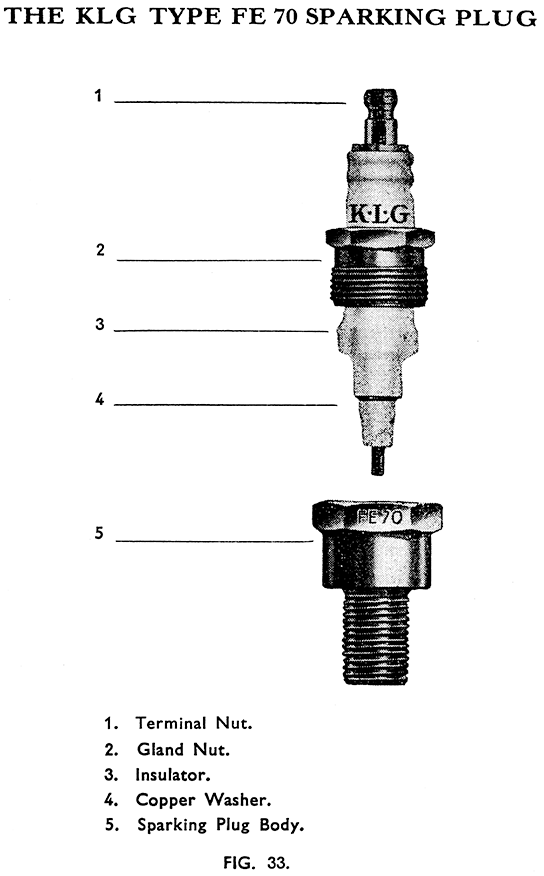- Details
- Category: MAC Service Guide (1965)
- Hits: 6545
The Sparking Plug
Suitable Types.
The type of sparking plug fitted as initial equipment has been selected after exhaustive tests and has the characteristics most suited for general purposes in this type of engine. Sparking plugs are obtainable from several manufacturers who each produce a range of plugs of varying diameters, threads, and reaches (lengths of thread) and each size is usually offered in a range of different heat resistances. At the one extreme, plugs are cabaple of withstanding very high working temperatures without overheating, and at the other extreme of being able to continue firing in very oily conditions. The first will usually be found to oil up readily, and the second will not work long in a high performance engine before overheating sets in and causes pre-ignition of the charge in the cylinder.
Thus, if a plug of the same make and type as that originally fitted by us is unobtainable, the replacement must have similar characteristics. This is very important as, whilst a plug of too high internal heat resistance will usually only cause difficult starting, and misfiring, serious harm can be caused to the engine by the use of a " soft " plug, that is one which becomes overheated.
Our recommendations for this machine are KLG type FE70, Lodge type HLN, and Champion type NAB.
The thread diameter is 14 m.m. and the reach 18 m.m. (extra long). In no circumstances whatever must plugs of different reach be fitted.
Maintenance. (Fig. 33.)
The plug will require cleaning from time to time and the method used will depend upon whether the plug is constructed so that it may be taken apart for cleaning or is of the " non-detachable " type.
The " non-detachable " type must be cleaned by brushing the electrodes and the insides of the gas space as far as possible with a wire brush, or by " sand-blasting " on one of the special sparking plug cleaning machines. In either case the plug must afterwards be scrupulously cleaned out by washing in petrol to eliminate all risk of dirt, and more particularly, the sand used in cleaning, from working into the combustion chamber during subsequent service. Do not in any circumstances refit a sparking plug immediately after cleaning on a Plug Service Cleaner employing a sand-blast, but wash it well in petrol and blow out with a compressed air jet.
To clean a " detachable " type plug, this is taken apart as shown in Fig. 33, by holding the gland nut firmly, but not so tightly as to cause damage by crushing, in a vice - the jaws of which have been covered to prevent marking the nut. The plug body is then unscrewed off the gland nut. On removing the central portion take care of the sealing washer which must be refitted on reassembly.
Scrape the electrode, insulator, and the inside of the body clean of carbon with a penknife or clean with a wire-brush. Rinse in petrol before reassembling and make sure that the copper washer is in good condition and smear lightly with thin oil. Refit carefully and put the centre into the plug body, tightening the gland nut fully.
Adjusting the Plug Points.
After cleaning, the firing points will require adjusting to a gap of .018-in. to .023-in. Never adjust by bending the centre electrode as this will crack the insulator and render the sparking plug useless. All adjustments must be made by setting the side electrode.
Refitting to the Engine.
Make certain that the threads are quite clean and, if the sparking plug has been cleaned on a " Sand-blast " cleaner, that there is no sand left inside the plug - this is most important.
Lightly smear the threads of the plug with graphite paste or " Oil Dag," and screw in to the head carefully, being most careful to avoid cross threading.


